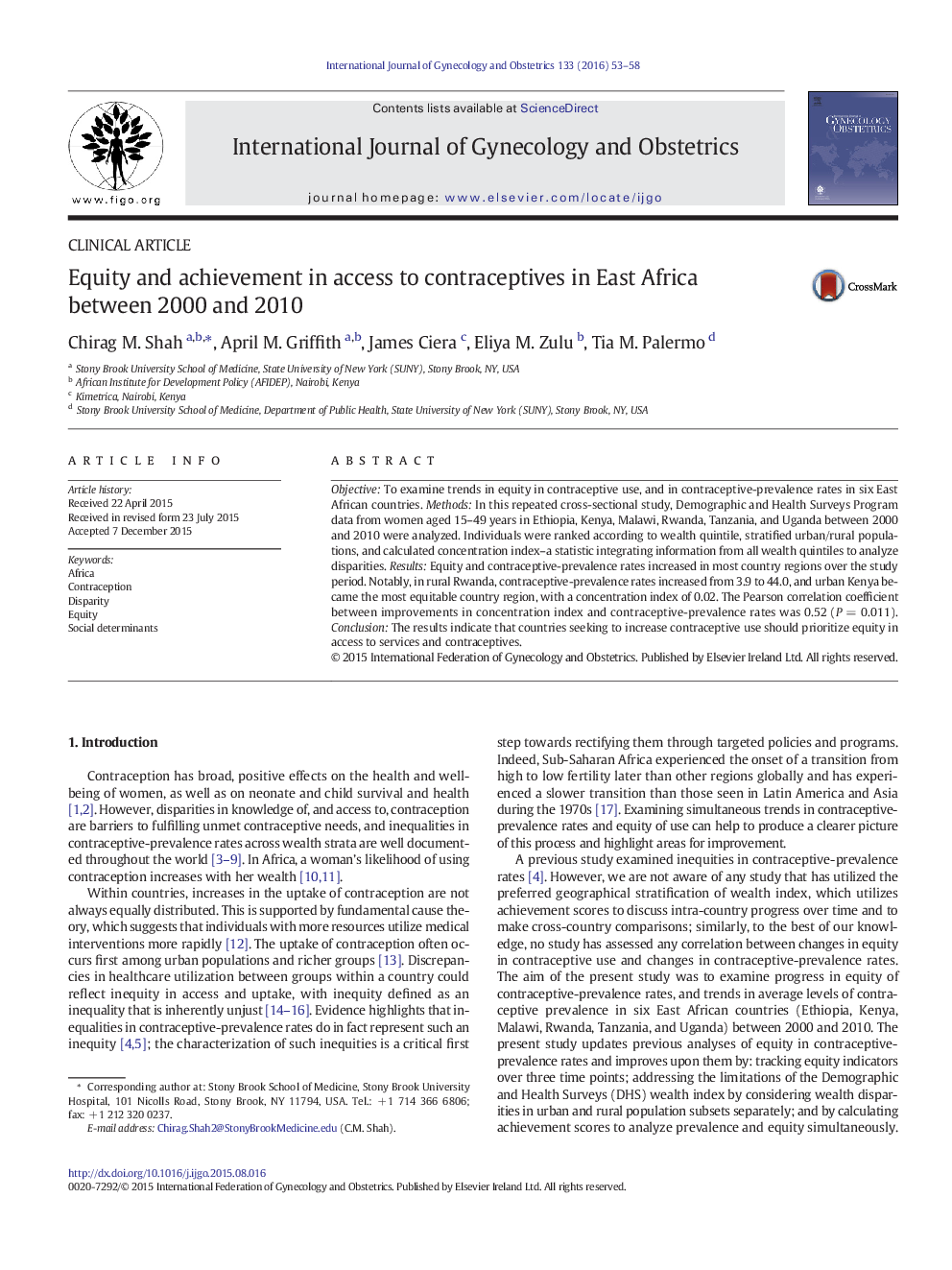| Article ID | Journal | Published Year | Pages | File Type |
|---|---|---|---|---|
| 3952147 | International Journal of Gynecology & Obstetrics | 2016 | 6 Pages |
ObjectiveTo examine trends in equity in contraceptive use, and in contraceptive-prevalence rates in six East African countries.MethodsIn this repeated cross-sectional study, Demographic and Health Surveys Program data from women aged 15–49 years in Ethiopia, Kenya, Malawi, Rwanda, Tanzania, and Uganda between 2000 and 2010 were analyzed. Individuals were ranked according to wealth quintile, stratified urban/rural populations, and calculated concentration index–a statistic integrating information from all wealth quintiles to analyze disparities.ResultsEquity and contraceptive-prevalence rates increased in most country regions over the study period. Notably, in rural Rwanda, contraceptive-prevalence rates increased from 3.9 to 44.0, and urban Kenya became the most equitable country region, with a concentration index of 0.02. The Pearson correlation coefficient between improvements in concentration index and contraceptive-prevalence rates was 0.52 (P = 0.011).ConclusionThe results indicate that countries seeking to increase contraceptive use should prioritize equity in access to services and contraceptives.
